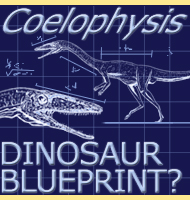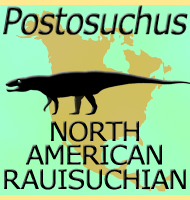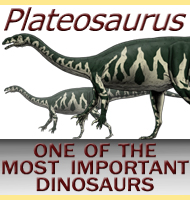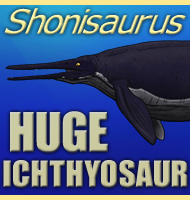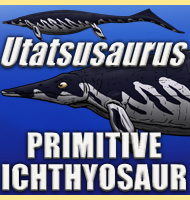


Redondasaurus

Name:
Redondasaurus
(Redonda lizard).
Phonetic: Re-don-dah-sore-us.
Named By: A. P. Hunt & S. G.
Lucas - 1993.
Classification: Chordata, Reptilia,
Phytosauria, Phytosauridae, Leptosuchomorpha, Pseudopalatinae.
Species: R. bermani, R. gregorii.
Diet: Carnivore.
Size: Largest known skulls up to 120 centimetres
long,
total body size approximately up to about 6.4 meters long.
Known locations: USA, New Mexico - Chinle
Formation, Redonda Formation, Travesser Formation. Utah -
Wingate Sandstone Formation.
Time period: Norian to Rhaetian of the Triassic.
Fossil representation: Fossil remains of several
individuals.
Redondasaurus
was a large phytosaur
that is known to have lived in the USA during the
late Triassic period. The largest known skull at the time of writing
is about eighty centimetres long, and is very robustly formed. This
alone indicates that Redondasaurus was a predator
of large
vertebrates, perhaps lurking in Late Triassic waters and jumping out
at other creatures as they came to the water to drink.
Redondasaurus was among the last phytosaurs known
to have lived, and
features several adaptations that make it notably more advanced than
other phytosaurs.
Redondasaurus
was named after the Redonda Formation where the holotype fossils were
first recovered from. Care should be taken not to confuse
Redondasaurus with Redondavenator,
a similarly named predator from
the same Formation.
Further reading
- A new phytosaur (Reptilia: Archosauria) genus from the
uppermost Triassic of the western United States and its biochonological
significance. - The Nonmarine Triassic. New Mexico Museum of
Natural History and Science Bulletin 3:193-196. - A. P. Hunt
& S. G. Lucas - 1993.
- Juvenile skull of the phytosaur Redondasaurus
from the Upper Triassic
of New Mexico, and phytosaur ontogeny. - New Mexico Museum of Natural
History and Science, Bulletin. 61. - Spencer G. Lucas, Justin A.
Spielmann & Larry F. Rinehart - 2013.
----------------------------------------------------------------------------
Random favourites
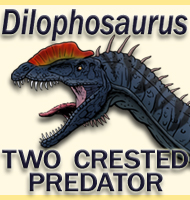 |
 |
 |
 |
